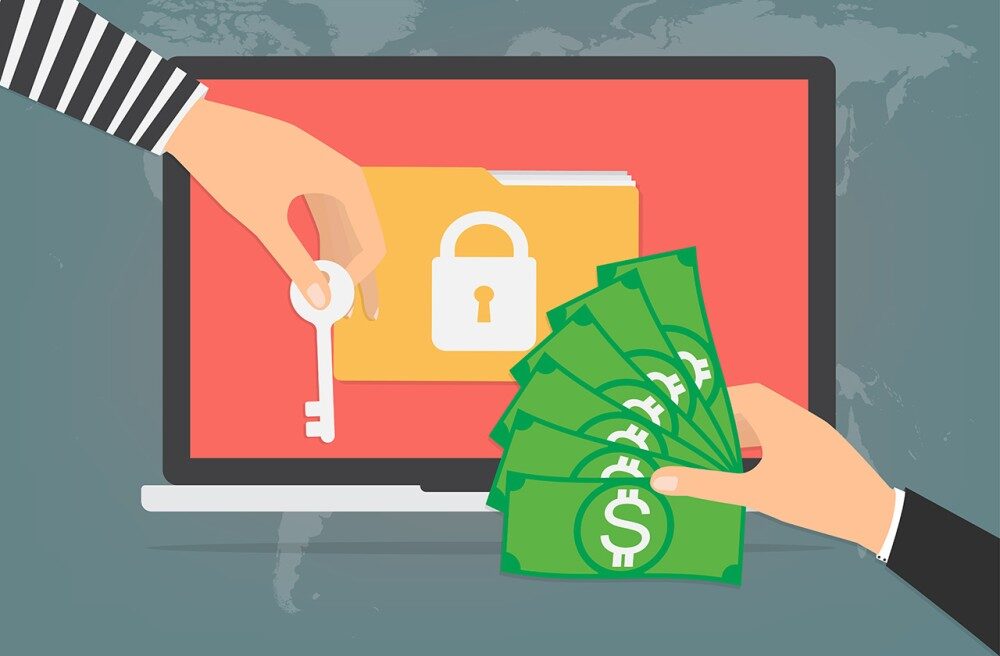No matter how hard it gets, there will always be someone, somewhere, whose goal it is to infiltrate and rob businesses of their valuable digital assets. The motivation of money is often the biggest culprit, as sensitive information and secured assets like that have proven to be quite valuable on the black market. But there is another way that money plays into cyber attacks: ransomware. Ransomware, or malicious programs that hold hostage your digital assets in exchange for paid ransom, often strike when they’re least expected. These are often an ideal attack type against larger organizations, who have the means to pay said ransom — and who often have the most valuable digital assets. While ransomware attacks can happen at any time to anyone, there are ways you can begin to prevent such attacks — even ones against large organizations.
Make Backups Of Everything
The whole idea behind a ransomware attack is that a user is denied what they need, and must pay to get it back. While sensitive data and other such things are crucial to operations in many organizations, there is a way to operate even when such an attack occurs. If you have multiple backups of everything, including your much-needed data and applications for business processes, you’ll be steps ahead of any ransomware attacker. After all, there’s never any guarantee that a paid ransom will get you your materials back. It is, after all, the work of a criminal: they don’t need to abide by any rules, and their only goal is to gouge users for money. With that in mind, if your business is under attack by ransomware, you shouldn’t pay the ransom. Not only does payment encourage the actions to continue by such terrorists, but such payments put your business in a worse position.
Understand The Threat Landscape
What many people struggle with is finding out how they got breached in the first place. If you’re looking to prevent a ransomware attack from occurring, don’t wait until the breach happens to figure out what happened: learn how ransomware spreads, and study those patterns. Become familiar with the avenues that this type of software uses to enter an organization’s network, and start to safeguard accordingly. Filtering out suspicious emails, employing a strong endpoint protection tool, or even adding a next-gen firewall can help — all by simply emphasizing whatever can fill the gap in the landscape’s most critical vulnerabilities. If you are staying up to date on how these threats travel, and you’re sharing that understanding with your teammates, then you’ll remain vigilant when it comes to monitoring these attack routes. Overall, it’s essential that you keep ahead of threats no matter where they come from, so familiarizing yourself with these regular patterns is a must — and even tools like patch management will become increasingly useful as you continually monitor for new vulnerabilities along these same routes.
Extend Your Protection Perimeter
You can’t stay on the defense the whole time — there have to be times where you and your organization take action to actively prevent ransomware and other attacks. One such action is to implement extended detection and response and other such tools that aid in protecting your perimeter well beyond one endpoint or the network. Extending your security tools’ reach into places like the cloud make it even easier to keep savvy of all the lurking threats around your organization. Even the unconventional methods of travel may prove to be vulnerable, so it’s up to you to proactively defend by taking your protection platforms and other tools to even the perimeter that surrounds your cloud applications.
You won’t be able to seek out and eliminate some threats by limiting your tools to responsive action within the endpoint or within your network: you have to allow something like an XDR tool to defend even closer to the edge of the outside world. XDR and other such tools can even enact cyber threat hunting, making it even easier to root out the few threats that would otherwise make things difficult and miserable later. In the same vein as understanding the threat landscape, you can even use XDR and other such tools to internalize threat intelligence for the purpose of finding such attack routes, attack types, and so on from open source intelligence and the like. Using threat intelligence as yet another extension of your reach and of your understanding, you’ll be miles ahead of most attacks that come your way.
Manage Access, Permissions, And Activity
If you’re in a large organization, then you have personnel who are trained and equipped to handle specific jobs with specific materials. In such cases, you can limit the reach and possibility of a ransomware attack by limiting what materials and activities are associated with those specific jobs. Whether the personnel are trustworthy is not the debate: it’s about whether they need everything they’re given access to. The more gatekeepers and entry points to go through, the more exposed your crucial data and assets become; so, it’s more prudent to manage and limit access for any and every role, making sure that people only have access to what’s relevant for their job. Permissions to every dataset aren’t likely necessary for every department, and in the same way, there should be parts of the network, layers of security, and even certain behaviors that are prohibited on the network to limit the chances of a threat breaking through. If you work ahead of your team by setting expectations on what their jobs require, you’ll be able to more easily prevent the occurrence or even the effects of a ransomware attack.
